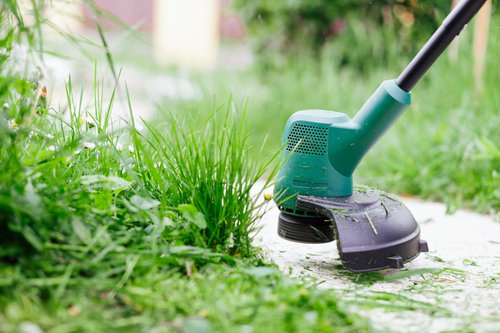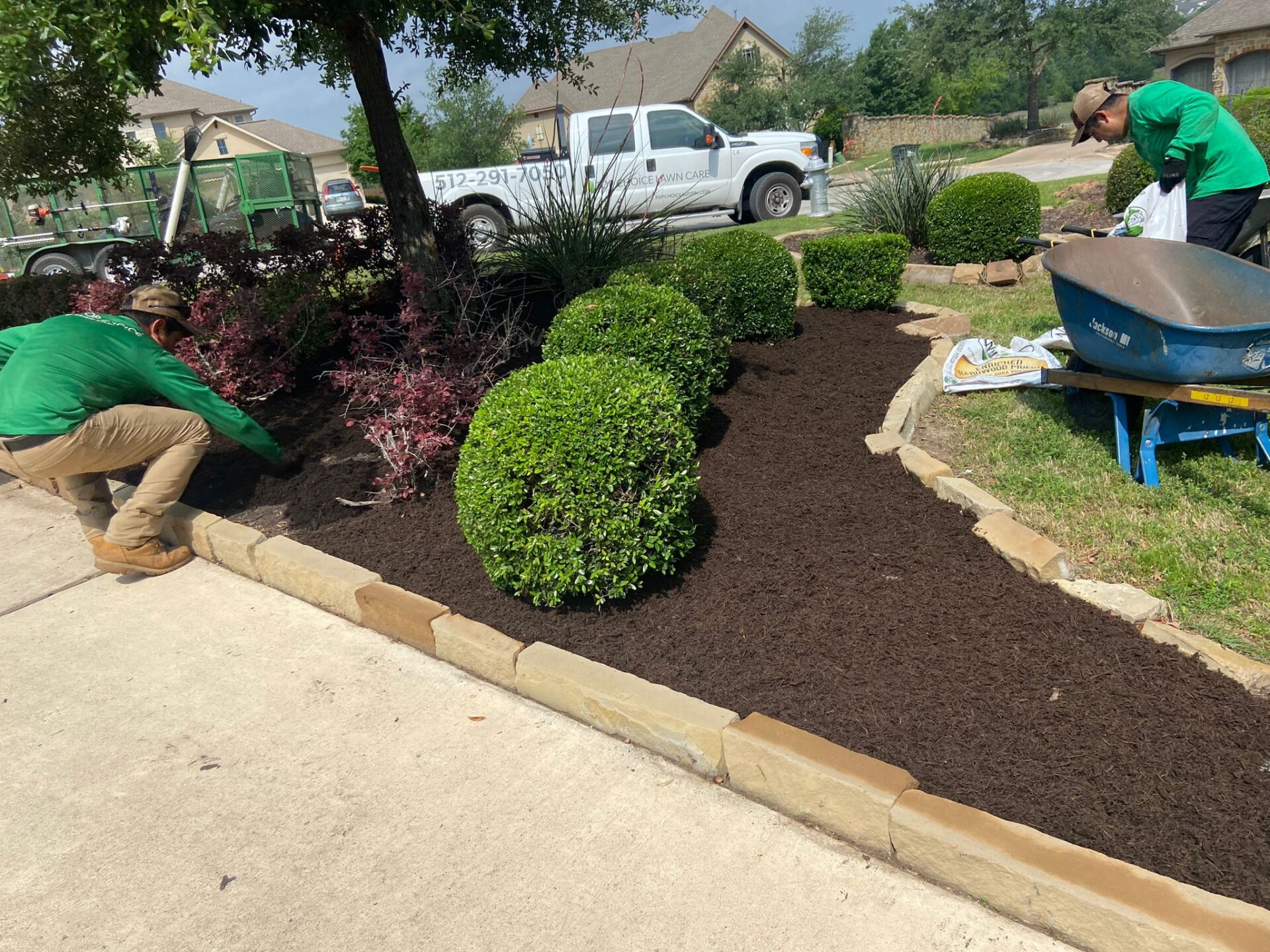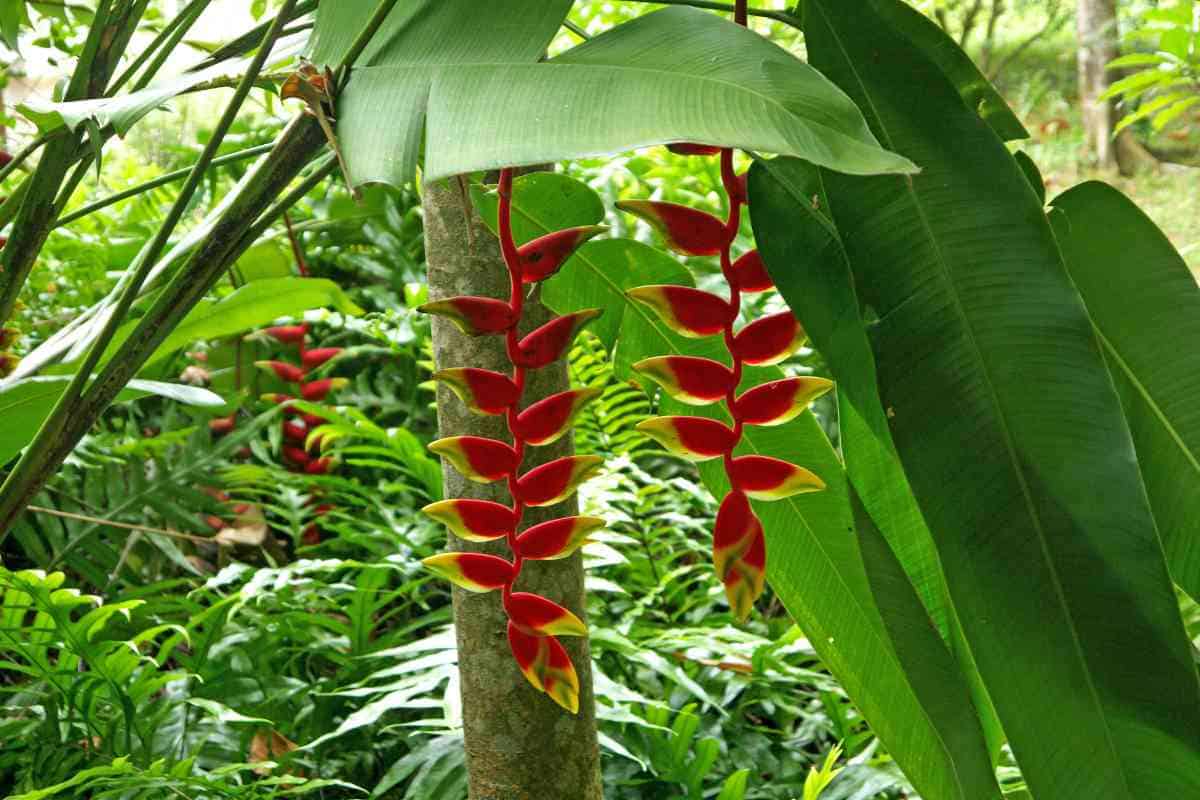
Embracing a Greener Approach: The Essence of Sustainable Landscape Maintenance
In today’s world, the call for sustainability echoes across all sectors, and landscape maintenance is no exception. Traditional landscaping practices often involve the heavy use of chemical fertilizers, pesticides, and excessive water consumption, leading to environmental degradation. Sustainable landscape maintenance, however, offers a refreshing alternative. It’s about creating and maintaining beautiful, healthy landscapes while minimizing environmental impact and promoting ecological balance. This approach not only benefits the planet but also enhances the aesthetic appeal and long-term viability of our outdoor spaces.
Sustainable landscape maintenance is more than just a trend; it’s a commitment to responsible land stewardship. It involves a holistic understanding of the ecosystem, incorporating practices that conserve resources, protect biodiversity, and enhance the health of the soil and plants. By adopting these strategies, we can create landscapes that are not only visually stunning but also resilient and beneficial to the environment.
Key Principles of Sustainable Landscape Maintenance
At the heart of sustainable landscape maintenance lie several core principles that guide the selection and implementation of various practices. Understanding these principles is crucial for anyone looking to create and maintain a truly sustainable landscape.
Water Conservation: Minimizing Water Usage
Water is a precious resource, and conserving it is paramount in sustainable landscaping. This involves several strategies:
- Efficient Irrigation Systems: Installing drip irrigation systems or soaker hoses delivers water directly to the roots of plants, minimizing water waste through evaporation and runoff. Smart irrigation controllers, which adjust watering schedules based on weather conditions, can further optimize water usage.
- Choosing Drought-Tolerant Plants: Selecting native or adapted plant species that require less water significantly reduces irrigation needs. These plants are often well-suited to the local climate and soil conditions.
- Mulching: Applying mulch around plants helps retain soil moisture, suppress weeds, and regulate soil temperature, thereby reducing the need for frequent watering.
- Rainwater Harvesting: Collecting rainwater in barrels or cisterns provides a free and sustainable source of water for irrigation.
Soil Health: Building a Healthy Foundation
Healthy soil is the foundation of a thriving landscape. Sustainable practices focus on improving soil quality and fertility:
- Composting: Composting organic waste, such as leaves, grass clippings, and kitchen scraps, creates nutrient-rich compost that can be used to amend soil, improve its structure, and enhance its water-holding capacity.
- Using Organic Fertilizers: Opting for organic fertilizers, such as compost tea, manure, or bone meal, provides essential nutrients to plants without the harmful effects of synthetic chemicals.
- Avoiding Soil Compaction: Minimizing foot traffic and the use of heavy machinery on the soil prevents compaction, which can impede root growth and reduce water infiltration.
- Soil Testing: Regularly testing the soil helps determine its nutrient levels and pH, allowing for targeted fertilization and amendment strategies.
Plant Selection: Choosing the Right Plants for the Right Place
Selecting plants that are well-suited to the local climate, soil conditions, and microclimates is crucial for sustainable landscaping:
- Native Plants: Native plants are adapted to the local environment and require less water, fertilizer, and pesticides than non-native species. They also support local wildlife by providing food and habitat.
- Planting in Zones: Grouping plants with similar water and sunlight requirements together helps optimize irrigation and reduce water waste.
- Avoiding Invasive Species: Choosing non-invasive plants prevents the spread of aggressive species that can outcompete native plants and disrupt ecosystems.
Pest and Disease Management: Embracing Integrated Pest Management (IPM)
Sustainable pest and disease management focuses on preventing problems before they arise and using the least toxic methods to control them when necessary. IPM involves:
- Monitoring: Regularly inspecting plants for signs of pests and diseases allows for early detection and intervention.
- Cultural Practices: Implementing cultural practices, such as proper pruning, watering, and fertilization, can improve plant health and resistance to pests and diseases.
- Biological Control: Introducing beneficial insects, such as ladybugs and lacewings, to control pest populations naturally.
- Using Organic Pesticides: When pesticides are necessary, opting for organic options that are less harmful to the environment and human health.
Waste Reduction: Minimizing Waste Generation
Sustainable landscaping aims to minimize waste generation through several practices:
- Composting: Composting yard waste and food scraps reduces the amount of waste sent to landfills.
- Mulching: Using mulch from organic sources, such as wood chips and shredded leaves, reduces the need for synthetic fertilizers and herbicides.
- Reducing Lawn Area: Replacing lawns with native plant gardens or other low-maintenance groundcovers reduces the need for mowing, watering, and fertilizing.
- Recycling: Recycling plastic pots, containers, and other landscape materials.
Implementing Sustainable Landscape Maintenance: A Step-by-Step Guide
Transitioning to sustainable landscape maintenance may seem daunting, but it can be achieved through a series of manageable steps. Here’s a practical guide to help you get started:
Assessment and Planning: Understanding Your Landscape
The first step is to assess your existing landscape and identify areas where you can implement sustainable practices:
- Evaluate Your Current Practices: Assess your current watering, fertilizing, and pest control methods. Identify areas where you can reduce water usage, minimize chemical applications, and improve soil health.
- Analyze Your Site Conditions: Consider factors such as sunlight exposure, soil type, drainage, and existing vegetation. These factors will influence your plant selection and maintenance strategies.
- Develop a Plan: Create a detailed plan outlining your goals, timelines, and specific actions. Prioritize the most impactful changes and break down the project into manageable phases.
Plant Selection and Design: Choosing the Right Plants
Selecting the right plants is crucial for the long-term success of your sustainable landscape:
- Research Native Plants: Learn about native plants that thrive in your region. Consider their water requirements, sunlight needs, and growth habits.
- Create a Design Plan: Develop a landscape design that incorporates native plants, minimizes lawn areas, and considers the needs of local wildlife.
- Group Plants Strategically: Group plants with similar water and sunlight requirements together to optimize irrigation and reduce water waste.
Soil Preparation: Building a Healthy Foundation
Healthy soil is essential for plant health and overall landscape sustainability:
- Conduct a Soil Test: A soil test will reveal the nutrient levels and pH of your soil, allowing you to make informed decisions about fertilization and amendment.
- Amend the Soil: Add organic matter, such as compost or well-rotted manure, to improve soil structure, water-holding capacity, and fertility.
- Avoid Soil Compaction: Protect the soil from compaction by limiting foot traffic and using mulch.
Water Management: Conserving Water Resources
Water conservation is a critical aspect of sustainable landscaping:
- Install Efficient Irrigation Systems: Consider drip irrigation systems, soaker hoses, or smart irrigation controllers to deliver water directly to plant roots.
- Water Deeply and Infrequently: Encourage deep root growth by watering deeply but infrequently.
- Collect Rainwater: Install rain barrels or cisterns to collect rainwater for irrigation.
Pest and Disease Management: Protecting Plant Health
Sustainable pest and disease management focuses on preventing problems before they arise:
- Monitor Regularly: Inspect plants regularly for signs of pests and diseases.
- Promote Plant Health: Provide plants with proper watering, fertilization, and pruning to improve their resistance to pests and diseases.
- Use Biological Controls: Introduce beneficial insects to control pest populations naturally.
- Use Organic Pesticides: If pesticides are necessary, opt for organic options that are less harmful to the environment and human health.
Ongoing Maintenance: Sustaining Your Landscape
Sustainable landscape maintenance is an ongoing process that requires consistent effort:
- Pruning: Prune plants regularly to maintain their shape, promote air circulation, and remove diseased or dead branches.
- Weeding: Control weeds manually or with organic herbicides.
- Fertilizing: Fertilize plants with organic fertilizers according to their needs.
- Monitoring: Continue to monitor your landscape for pests, diseases, and water needs.
Benefits of Sustainable Landscape Maintenance
The shift towards sustainable landscape maintenance offers a multitude of benefits, extending beyond the aesthetic appeal of our outdoor spaces. These benefits encompass environmental, economic, and social aspects, making it a truly holistic approach.
Environmental Benefits
Sustainable landscaping practices contribute significantly to environmental conservation:
- Reduced Water Consumption: Efficient irrigation systems and drought-tolerant plants minimize water usage, conserving this precious resource.
- Improved Air Quality: Plants absorb carbon dioxide and release oxygen, helping to improve air quality.
- Reduced Chemical Use: Organic fertilizers and pest control methods reduce the use of harmful chemicals that can pollute waterways and harm wildlife.
- Enhanced Biodiversity: Native plants support local wildlife by providing food and habitat, increasing biodiversity.
- Soil Health: Practices like composting and mulching improve soil health, leading to healthier plants and reduced erosion.
Economic Benefits
Sustainable landscaping can also provide economic advantages:
- Reduced Water Bills: Efficient irrigation systems and drought-tolerant plants lower water consumption, resulting in lower water bills.
- Lower Maintenance Costs: Native plants and low-maintenance landscaping practices require less watering, fertilizing, and mowing, reducing labor and material costs.
- Increased Property Value: Sustainable landscapes are increasingly valued by homebuyers, adding to property value.
- Long-Term Savings: By investing in sustainable practices upfront, you can avoid costly repairs and replacements in the long run.
Social Benefits
Sustainable landscaping also fosters positive social impacts:
- Improved Health and Well-being: Green spaces provide opportunities for recreation, relaxation, and connection with nature, promoting physical and mental health.
- Community Engagement: Sustainable landscaping projects can bring communities together, fostering a sense of pride and ownership.
- Educational Opportunities: Sustainable landscapes can serve as educational tools, teaching people about environmental stewardship and conservation.
- Aesthetics and Beauty: Well-designed sustainable landscapes are aesthetically pleasing, enhancing the beauty of our surroundings.
Common Challenges and Solutions in Sustainable Landscape Maintenance
While sustainable landscape maintenance offers numerous benefits, it can also present certain challenges. Understanding these challenges and implementing appropriate solutions can help ensure the successful adoption of sustainable practices.
Initial Investment Costs
Implementing sustainable practices, such as installing efficient irrigation systems or planting native plants, may involve higher initial investment costs. However, these costs are often offset by long-term savings:
- Solution: Explore government rebates, grants, or financing options to reduce the upfront costs.
- Solution: Prioritize the most cost-effective practices and phase in other improvements over time.
- Solution: Emphasize the long-term benefits, such as reduced water bills and lower maintenance costs, to justify the initial investment.
Lack of Knowledge and Expertise
Some individuals and organizations may lack the knowledge and expertise required to implement sustainable landscape maintenance practices. This can be addressed through education and training:
- Solution: Seek guidance from landscape professionals with expertise in sustainable practices.
- Solution: Attend workshops, seminars, or online courses to learn about sustainable landscaping techniques.
- Solution: Consult with local nurseries or extension offices for advice on plant selection and maintenance.
Resistance to Change
Some individuals may be resistant to changing their traditional landscaping practices. This can be overcome by:
- Solution: Educating people about the benefits of sustainable landscaping and dispelling misconceptions.
- Solution: Demonstrating successful examples of sustainable landscapes.
- Solution: Starting with small, manageable changes to build confidence and momentum.
Pest and Disease Control
Managing pests and diseases without using synthetic chemicals can be challenging. However, effective organic solutions are available:
- Solution: Implement integrated pest management (IPM) strategies, including monitoring, cultural practices, and biological controls.
- Solution: Choose pest-resistant plant varieties.
- Solution: Use organic pesticides as a last resort, following label instructions carefully.
Water Availability
In regions with limited water resources, water conservation is critical. The following practices can help:
- Solution: Install efficient irrigation systems, such as drip irrigation or soaker hoses.
- Solution: Choose drought-tolerant plants that require less water.
- Solution: Collect rainwater for irrigation.
Future Trends in Sustainable Landscape Maintenance
The field of sustainable landscape maintenance is constantly evolving, with new technologies and approaches emerging. Staying informed about these trends can help you stay ahead of the curve:
Smart Technologies
Smart technologies are playing an increasingly important role in sustainable landscaping:
- Smart Irrigation Systems: These systems use sensors and weather data to automatically adjust watering schedules, optimizing water usage.
- Remote Monitoring: Sensors can monitor soil moisture, plant health, and other factors, allowing for remote monitoring and management of landscapes.
- Robotics: Robots can be used for tasks such as mowing, weeding, and fertilizing, reducing labor costs and improving efficiency.
Green Infrastructure
Green infrastructure, such as green roofs, rain gardens, and bioswales, is becoming increasingly popular:
- Green Roofs: Green roofs can reduce stormwater runoff, improve air quality, and provide habitat for wildlife.
- Rain Gardens: Rain gardens capture and filter stormwater runoff, reducing pollution and recharging groundwater.
- Bioswales: Bioswales are vegetated channels that filter stormwater runoff and direct it to drainage systems.
Emphasis on Biodiversity
There is a growing emphasis on creating landscapes that support biodiversity:
- Native Plant Gardens: Planting native plants that provide food and habitat for local wildlife.
- Pollinator Gardens: Creating gardens specifically designed to attract pollinators, such as bees and butterflies.
- Wildlife Habitats: Designing landscapes that provide food, water, and shelter for a variety of wildlife species.
Community Engagement
Community engagement is becoming increasingly important in sustainable landscaping:
- Community Gardens: Creating community gardens where people can grow their own food and connect with nature.
- Educational Programs: Offering educational programs to teach people about sustainable landscaping practices.
- Volunteer Opportunities: Providing volunteer opportunities for people to participate in sustainable landscaping projects.
Conclusion: Cultivating a Sustainable Future for Our Landscapes
Sustainable landscape maintenance is not just a set of practices; it’s a philosophy that embraces environmental stewardship and a commitment to creating beautiful, healthy, and resilient landscapes. By adopting the strategies outlined in this guide, we can conserve precious resources, protect biodiversity, and enhance the well-being of our communities. The journey towards sustainable landscaping is an ongoing one, requiring continuous learning, adaptation, and innovation. By embracing the principles of sustainability, we can cultivate a greener future for our landscapes and create a more harmonious relationship between humans and the natural world.
As we move forward, let us remember that every small step towards sustainable landscape maintenance contributes to a larger movement. Whether it’s choosing drought-tolerant plants, installing a rain barrel, or simply composting our yard waste, each action makes a difference. By embracing these practices, we not only enhance the beauty and health of our own outdoor spaces but also contribute to a more sustainable and vibrant planet for generations to come. Let’s nurture nature, one landscape at a time.


